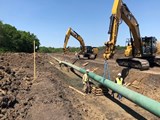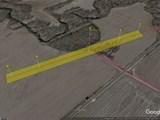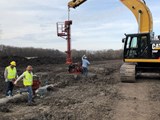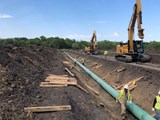Wednesday, October 16, 2019
Pipeline Lowering
Why do pipelines have to be lowered? There are times when catastrophic flooding will remove large amounts of protective soil from the pipeline. Rather than have a normal 5 feet or more to the top of the pipe, there may be only 1 to 2 feet of cover. This creates an opportunity for damage to the wall of the pipe from agricultural or construction equipment. It is not a safe situation. Interestingly many lowerings occur because of the slow loss of topsoil from agricultural fields. Over a span of 50 years significant topsoil loss can gradually begin to decrease the amount of soil cover over the pipeline. There are also cases where new roads are being built or widened and the line will interfere with road construction. In these cases the lines must be lowered to allow fill material and compaction of the road bed to take place.
On a recent 20" diameter line Midwestern Contractors won a project that involved lowering 1,800' of the line, Fabricating a raised valve assembly, Installing a stopple, cutting out and tieing in the new valve, and wiring the electrical controls for the valve.
When complete the entire project was restored to either agricultural use, grass or gravel. Heavy equipment was trucked into the site and over an active railroad grade. After the line was positively located the top soil was separated and stock piled. Mats were then brought in to create a safe work pad over the line. This pad was then moved as the excavator exposed the line. The line was then supported with cribbing every 25' to support the line in its original position.
After the cribbing supports were in place the entire line was stripped of its original coating with a sand blaster. The entire 1,800' section was inspected for anomalies. Then a fresh coat of Denso epoxy coating was applied by spray method. After this task was completed the lowering process started. Using two excavators the line was lowered 6 inches at a time. Once the lowering started the crew worked until completion. The line was lowered approximately 30".
Back fill was with native soil and rough grading. then the stockpiled topsoil was replaced and finished graded back to the original contour.
While the lowering was taking place the valve crew exposed the existing below ground valve and fabricated and hydrostatically tested a new valve. They then installed a stopple fitting. The line was drained and the old valve cut out. The fabricated raised valve was then hoisted into position, temporarily supported with false work and tied into the main line.
Weather delays added time to this project and a couple of rattle snakes that called the place home, had to be removed. Aside from that there were no delays, no safety incidents. The line now has sufficient depth of cover to protect it. Line lowering is a necessary procedure to keep pipelines safe and keep gas and liquid products moving to their destinations.
Project notes:
- 20" diameter 1,800' section, stripped, coated and lowered 30"
- Raised valve offsets fabricated and installed
- Valve controls wired, electrical panel set and power buried to the panel and valve
- Stopple fitting installed
- 360,000 cubic yards of earth moved and replaced
- Restoration to agricultural field, grass, or gravel
PROJECT GALLERY
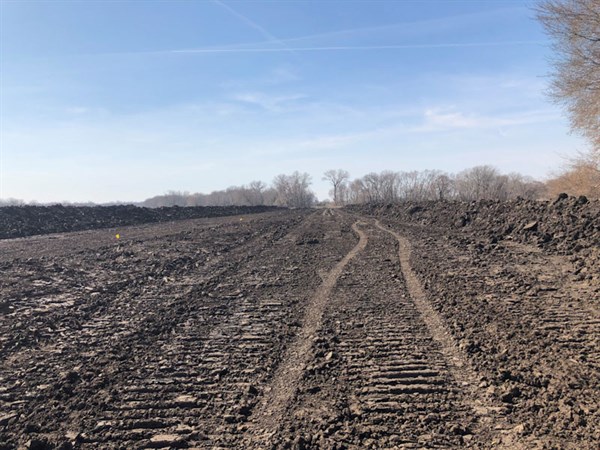
Top soil removed and stockpiled
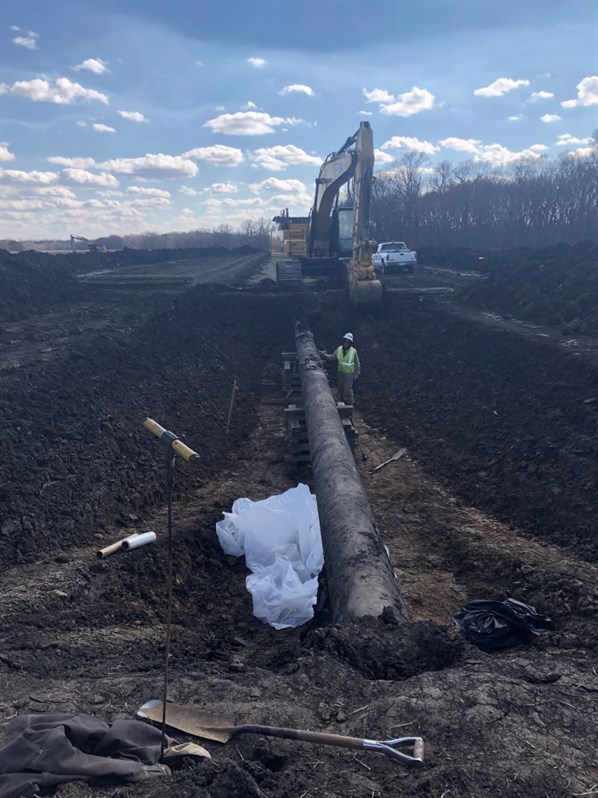
Exposing the line - Probe in foreground
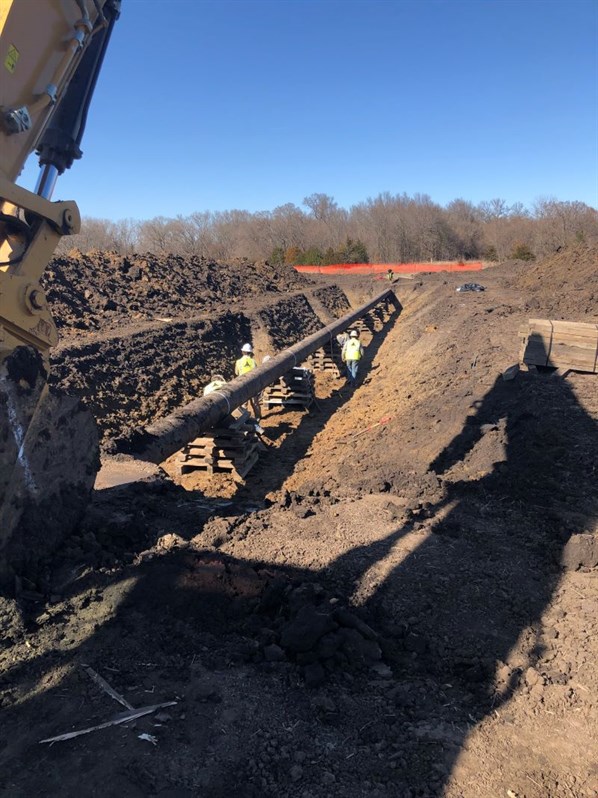
Cribbing for temporary support
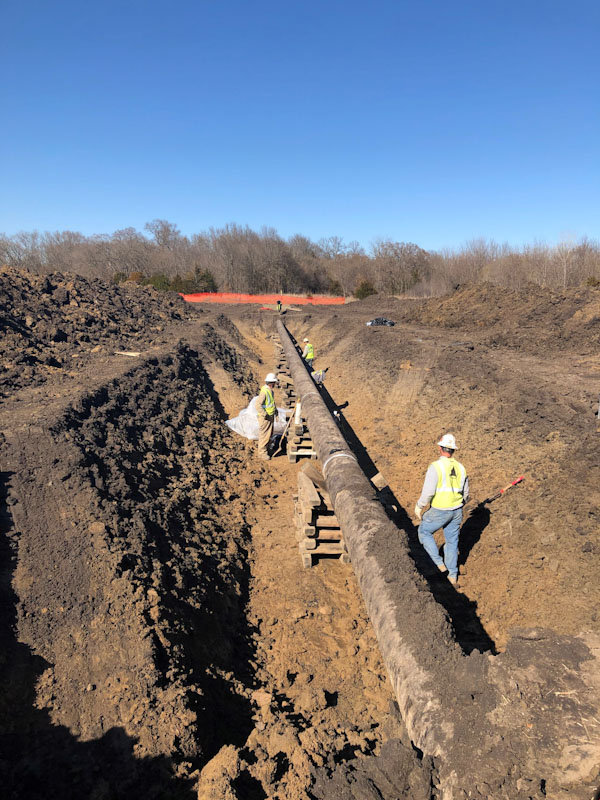
Temporary support timber cribbing
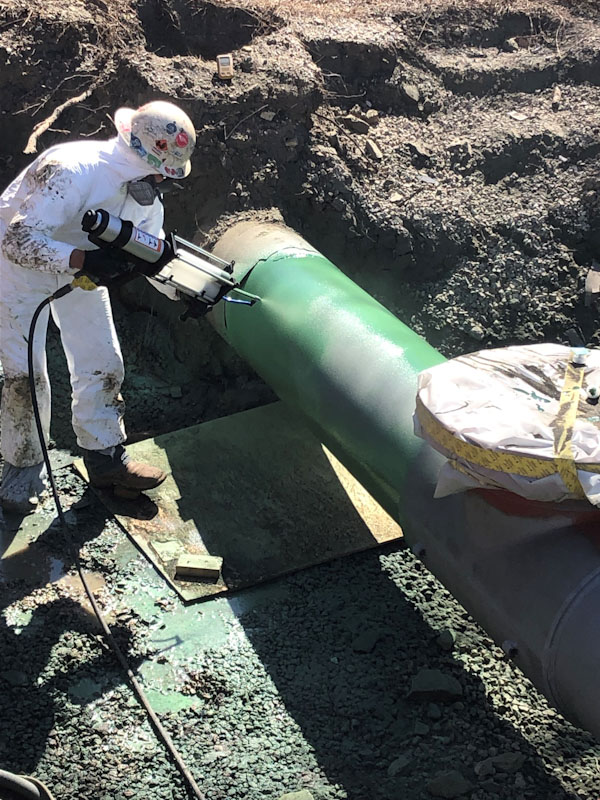
Applying coating
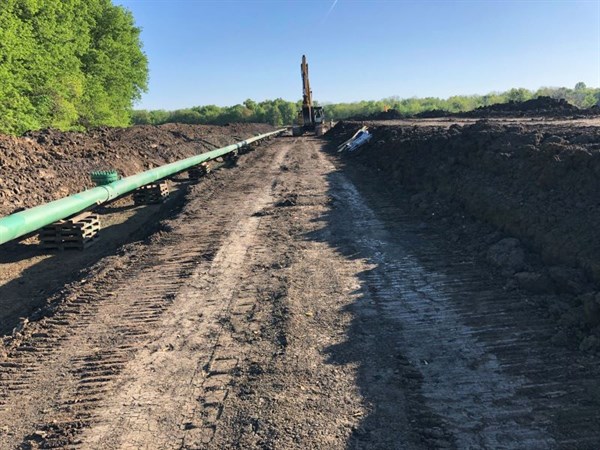
Pipe with coating applied
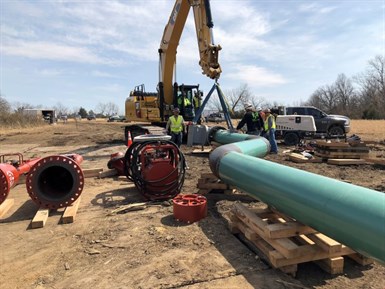
Fabricating offsets for raised valve
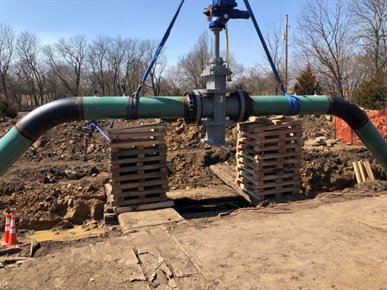
Temporary support for raised valve
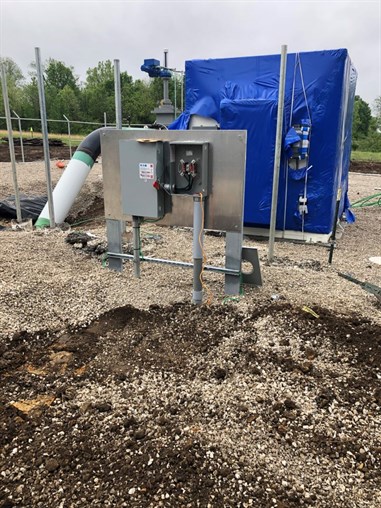
Valve power and controls
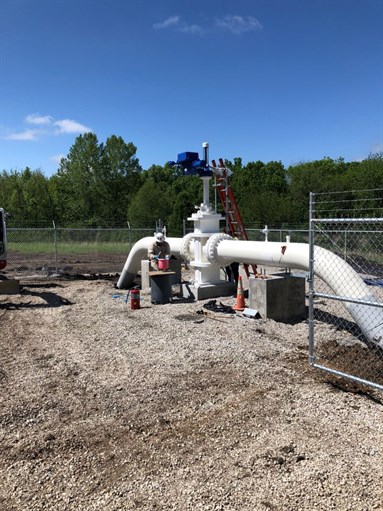
Finished valve

